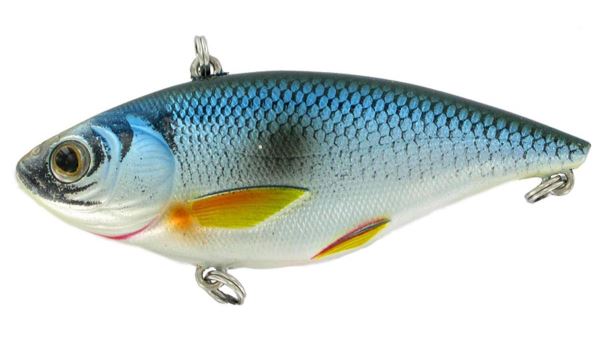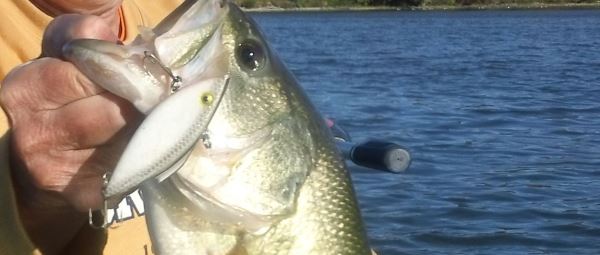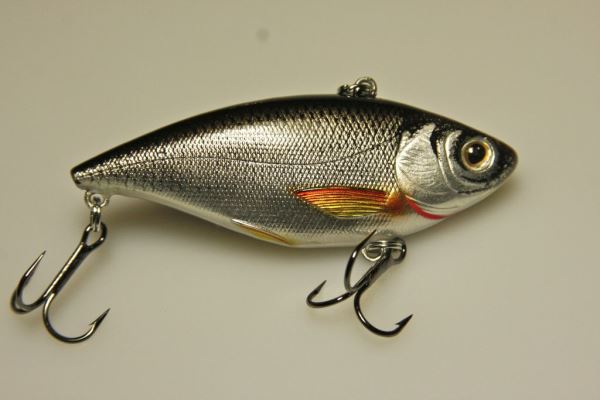
For Todd Faircloth, fishing lipless crankbaits is a fact of life in the spring, and a single glance in his boat will always reveal at least one, and usually several, tied on and ready to cast this season of the year no matter where the Yamaha Pro is fishing. After all, Faircloth’s two heaviest fish of his career, both 11 ½ pounders, came on the vibrating shad-imitation lures.
“The biggest advantage lipless crankbaits provide is that they allow you to cover a lot of water in a hurry, and that can be extremely important in the spring,” emphasizes Faircloth, winner of the first Bassmaster Elite tournament of the 2013 season.
“Depending on the water temperature where you fish, bass could be in pre-spawn, spawn, or post-spawn mode, which means they could be in a lot of different places. With a lipless crankbait you can do that easier than with any other lure I know.”

Lipless crankbaits are swimming, vibrating lures similar in size to regular diving crankbaits, except they don’t have the diving bills. They’re designed to look like small forage fish, and most pros like Faircloth use them primarily in shallow water less than 10 feet deep. The most popular sizes are 1/2 and 3/4 ounce.
“Lipless crankbaits are reaction-strike lures, so you don’t necessarily need to have ideal conditions to fish them,” continues Faircloth. “They produce the best results when there is a light breeze and a slight chop on the water, but I’ve also caught bass on them when it was calm and bright.
“Because they’re designed to attract reaction strikes, I use a fast retrieve whenever I fish them because I don’t want bass to have time to look at the lure.”
The real key to fishing lipless crankbaits in the spring, however, is not only using a fast retrieve, but also keeping the lure in contact with bottom cover, emphasizes the Yamaha Pro. This could be submerged vegetation such as hydrilla or milfoil, as well as rocks, gravel, or sand. The lure is not weedless, however, so it can’t be reeled into thick brush or timber; instead, Faircloth retrieves the crankbait over the top of such cover, just ticking it slightly.

“I don’t do much more than make long casts and reel the bait back,” Faircloth laughs. “There is hardly an easier lure to use in bass fishing, and I would guess a lot of today’s anglers probably caught their first bass on a lipless crankbait. I’m pretty sure I did.”
Faircloth suggests using 16-pound fluorocarbon line for most conditions, although when he’s fishing very thick vegetation he often changes to 30-pound braided line. The only change he makes to the crankbaits is to put on slightly larger size 4 extra-wide gap hooks, which bass can’t throw as easily. He seldom fishes the red lipless crankbaits so popular in the spring, preferring instead colors like chartreuse or chrome and blue.
“I really prefer the slightly larger 3/4-ounce sizes rather than the 1/2-ounce models, too,” he adds, “because I’m a firm believer that larger lures catch larger bass. I’ve seen it happen too often.
“When I was growing up and learning to fish on Sam Rayburn Reservoir, my father and I fished team tournaments in which we’d use different sizes of lipless crankbaits. Invariably, the larger crankbait produced the largest bass.”
The Yamaha Pro’s two big bass came from Rayburn and nearby Toledo Bend, and on both occasions Faircloth was swimming the lures over submerged vegetation. Whenever the lure dropped into the vegetation, he simply ripped it free with a hard rod jerk, and when he did, the fish hit. It’s a presentation he still uses today.
“Lipless crankbaits are a lure I always have tied on, especially now in the spring,” concludes the Yamaha Pro. “It really doesn’t matter which stage of the spawn bass are in, because this is one lure they’ll always hit.”

